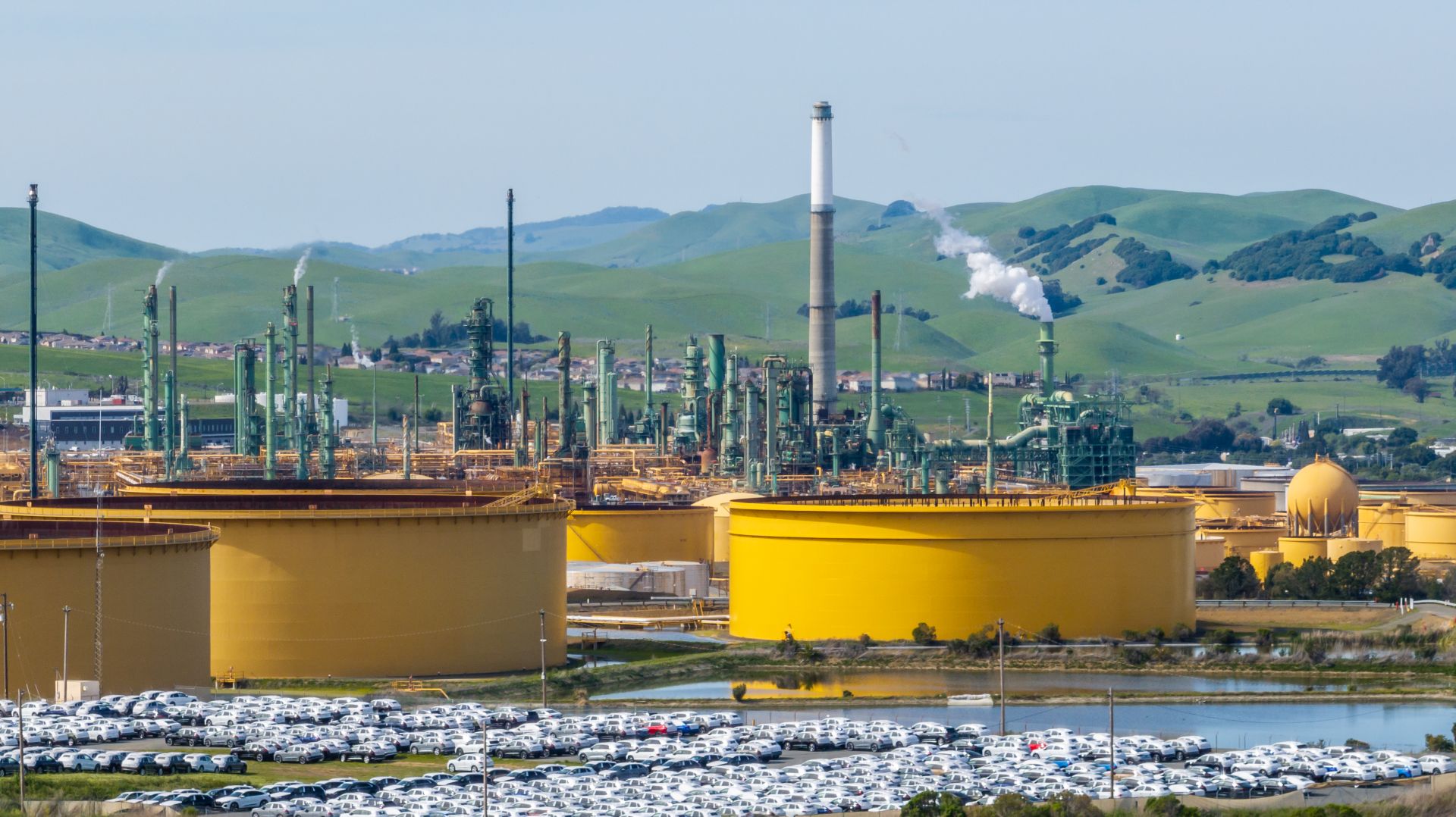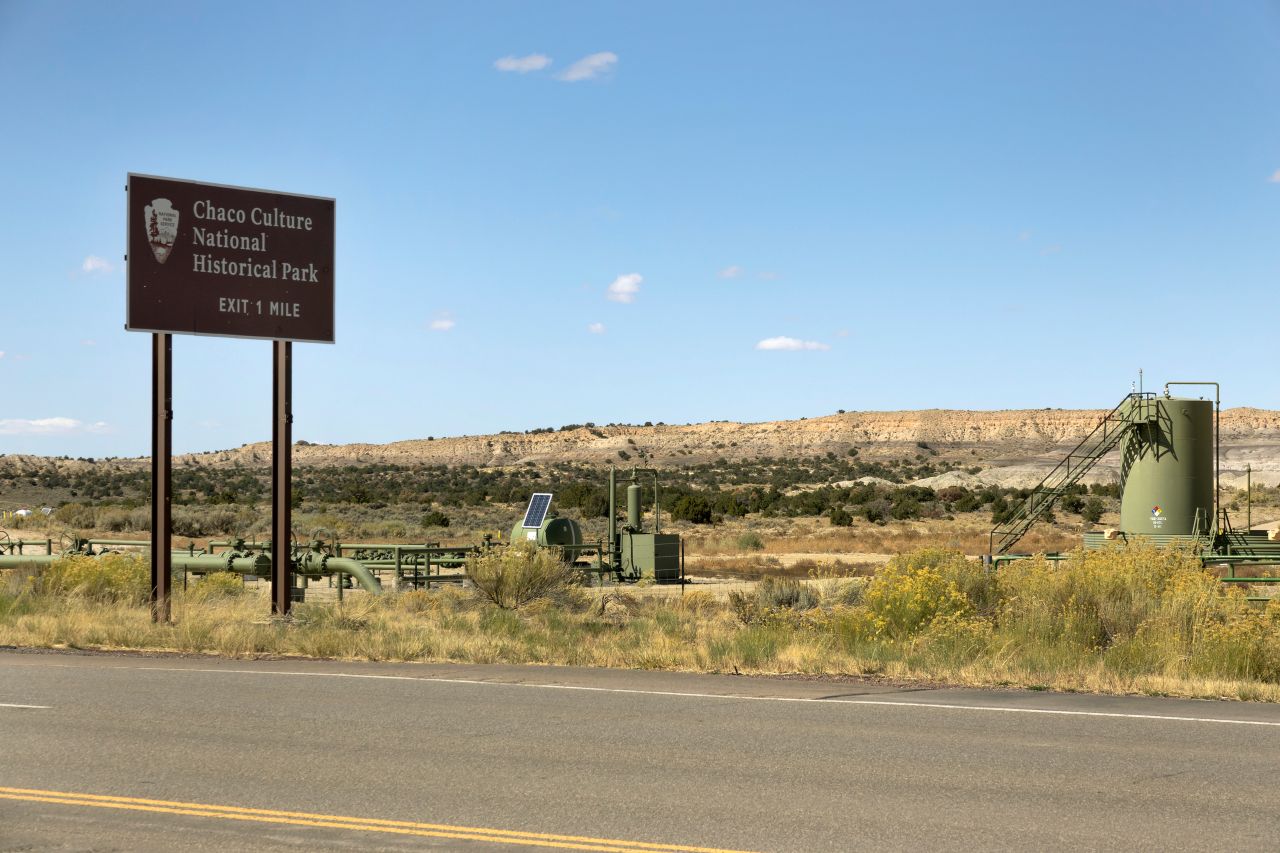Deep blue California ‘panics’ about refinery closures by allowing more drilling

In mid-September, California lawmakers passed a six-bill package of energy and climate legislation, including a bill that allows oil-rich Kern County, north of Los Angeles, to issue 2,000 new drilling permits a year without further environmental review for the next decade.
The increased drilling in the Democratic stronghold was sold as an effort to provide struggling refineries in the state with easier and cheaper access to crude oil to help keep gasoline costs down. State leaders worried that without interventionist measures like this, rising energy costs, combined with two recently announced refinery shutdowns, could turn the public against the state’s hard-won progressive climate and environmental programs during a period of national regression on environmental issues.
The six bills also extend a state climate program (called “cap and trade”) to 2045, expand the state’s wildfire control fund, cut the cost of building transmission lines, and open the door to a regional power market, among other things.
Gov. Gavin Newsom, a Democrat who has made it clear he sees himself as a national figure, praised the legislation as “historic reforms that will save money on electric bills, stabilize gas supply, and slash toxic air pollution — all while fast-tracking California’s transition to a clean, green job-creating economy.”
He may be making a political gamble that shifting on energy policy to keep down gasoline prices may help with future presidential ambitions.
As recently as a few years ago, Gov. Newsom was calling on the state to ban hydraulic fracturing for oil and gas by 2024 and to consider phasing out all oil production statewide by 2045. He explained his change of tune as a pragmatic shift.
“We are all the beneficiaries of oil and gas. No one is naive about that,” he said at a recent news conference. “It’s always been about finding a just transition, a pragmatism.”
Hollin Kretzmann, a senior attorney at the Center for Biological Diversity, said rather than push back against President Trump’s relentless attacks on clean energy, California’s leaders abandoned their commitments to the environment and the climate in the recent legislative session.
“It’s ironic that as Gov. Newsom is mocking Trump on social media, he’s led the state’s oil drilling policies to mirror those of the Trump administration,” said Kretzmann. “California’s backsliding at the behest of Big Oil is inexcusable. Sacramento fell prey to Big Oil this session.”
Lauren Teixeira, a climate and energy analyst with the Breakthrough Institute, a technology-oriented environmental research center, contended that the 2024 election signaled voter concern for cost of living and affordability is rising. Rather than view the legislation as a failure of leadership, she sees it a belated effort to try to shape policy to reflect constituents' wishes.
“California's environmental policies are associated with high gas prices and Democratic lawmakers are eager to shed this political liability as quickly as possible,” she said. “Governor Gavin Newsom most among them.”
The two refineries slated to close in California over the next year make up about 17 percent of the state’s gasoline production capacity. California’s gas prices are already almost 50 percent higher than the national average and currently hover around $4.60 per gallon.
State leaders are considering giving hundreds of millions of dollars to Valero Energy Corp. to prevent the shutdown of its Benicia refinery in the San Francisco Bay Area, which processes 145,000 barrels of oil per day. Slated to shutter by April 2026, the bailout would provide funds to address rising maintenance costs that refinery operators cite as a reason for the planned closure.
Gov. Gavin Newsom already delayed a controversial oil refinery profit cap earlier this year, responding to a demand high on oil companies’ wish lists, after Valero and the Phillips 66 Carson refinery in Los Angeles both announced shutdown plans. Newsom also urged the California Energy Commission to “redouble” efforts to collaborate with refiners, ensuring they have the support needed to maintain operations.
Teixeira said California made a very bad miscalculation with regards to refineries and how much regulation they were willing to put up with.
“Despite repeated statements from refiners that margins were quite thin, the state’s environmental establishment seems to have maybe bought into its own rhetoric that refiners were raking in these exorbitant profits even though there wasn't good evidence of that,” Teixeira said.
Teixeira added that California’s gasoline supply is hard to replace, because it’s a “special boutique blend that only in-state refineries produce. ” In the long run, she said she believes that the state will import most of its gasoline from Asia and that the rest of California’s refineries will go under.
In the early 1980s, California had around 40 refineries. That number has since been consolidated down to about a dozen.
Kretzmann argued that the laws passed by the state legislature will not lead to lower gas prices or keeping refineries open.
“The hard truth is that we need to do everything possible to get California off fossil fuels to protect people and wildlife, but instead the state is locking us into more fossil fuel damage at everyone’s expense,” he said.
A recent analysis by Paasha Mahdavi, Director of the Energy Governance and Political Economy Lab and the University of California, Santa Barbara, found that propping up in-state oil production will not solve the refinery challenge, but will continue to harm communities that are exposed to the health-damaging emissions from oil operations, and will lead to more greenhouse gas pollution.
Mahdavi’s analysis determined that despite the two announced refinery closures, statewide gasoline demand over the next six years can continue to be met by supply from in-state refineries and gasoline from out of state without increasing gasoline imports or building new import infrastructure. According to the analysis, gasoline demand in the state will continue to decline at a pace of 1.6 percent annually, with an expected 30 percent decline in gasoline consumption from 12.3 billion gallons per year in 2023 to about 8.4 billion per year by 2045.
Mahdavi said the refinery closures sparked a panic in lawmakers afraid that the state’s climate progress will be wiped away in a wave of backlash against the overblown threat of rising gasoline prices and national political pressure.
“People are afraid of right-wing populist backlash,” he said. “It’s shortsighted. We are in a hard moment, there’s lots of levers we can pull, this is not the best one.”
At the end of 2024, California imposed a $82 million fine on the Valero refinery for air pollution violations – the largest ever in the region.
The local environmental justice communities surrounding the refinery that cheered the state for holding Valero accountable for its pollution are disappointed that state officials are now considering a publicly-funded bailout of the refinery to keep it open.
“These bills continue to make EJ communities into sacrifice zones for the benefit of industry profit,” wrote ten groups in a statement.
Lead photo: The Benicia Refinery in California's San Francisco Bay Area. Photo by iStockphoto.















